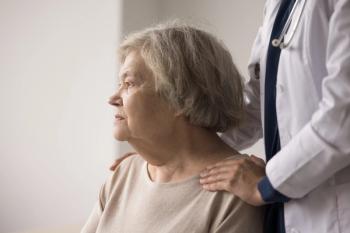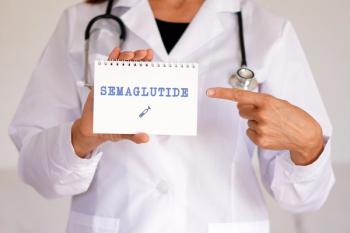
- Vol 34 No 7
- Volume 34
- Issue 7
What’s New in Bipolar Depression?
Here: a plethora of treatment options, including mood-lifting stabilizers, non-antidepressants, psychotherapy, and lifestyle interventions.
Therapeutic imbalance
There’s a slight imbalance in our therapeutics for bipolar disorder. While patients spend most of their time in the depressed phase, the FDA-approved treatments for mania outnumber those for depression 4 to 1.
First, here are my biases. In addition to the FDA-approved options, I will consider any treatment with at least one randomized, controlled trial that supports its merits. I tend to favor those with large effect sizes (eg, pramipexole) or low risks (eg, omega-3 fatty acids). I also value treatments with long-term data, even when their short-term benefits are debatable (eg, lamotrigine, psychotherapy). This is, after all, a chronic condition.
Mood-lifting stabilizers
The ideal treatment for bipolar depression would
Bipolar disorder may be chronic, but its episodes need not be.
How to choose among them? Collaborate. Adherence hovers around 50% in bipolar disorder, so it behooves us to ask patients about their hopes and fears in treatment. If fast results are desired, the atypical antipsychotics may be best. More often, patients value tolerability, in which case lamotrigine and lithium might come first. Practitioners often question lamotrigine’s efficacy and lithium’s tolerability, but new research suggests those reputations may be undeserved.3,4
Non-antidepressants for bipolar disorder
Next in line are medicines that can treat acute bipolar depression without destabilizing mood. These are best paired with a mood stabilizer, since they won’t prevent new episodes on their own. I have left antidepressants off this list because their mood-destabilizing potential has not escaped the eye of controlled
Pramipexole is noteworthy because it has a large effect size (0.77 - 1.1) and lacks detrimental effects on weight, sexuality, and cognition.8 Modafinil and armodafinil also share that side-effect profile, although the research on these agents is not as clearly positive as it is for pramipexole.1 In my experience, these novel stimulants rarely break through severe depression but often improve residual symptoms such as cognition and fatigue. For patients, however, that can make the difference between staying in bed and returning to work.
Thyroid augmentation is particularly useful in lithium-treated patients, in whom keeping the thyroid-stimulating hormone level close to 2.6 mIU/L lowers the risk of depressive relapse.9
Among devices, ECT has long been known to surpass pharmacologic options for unipolar depression, and a recent
Light therapy has promising open-label studies and a positive controlled trial (when paired with
Therapy and lifestyle
My top choices in this category are Social Rhythm Therapy (SRT),
The benefits of exercise compare favorably with those of antidepressants, and in one
That raises a question: Can exercise trigger mania? I think not, unless the patient is exercising in place of sleep. BDNF levels are low in
Regular rhythms of sleep and daytime activity are the focus of the 2 therapies I’ve highlighted:
The most important expectation to clarify for people with bipolar depression is this one: they should expect, and do deserve, a full recovery. Bipolar disorder may be chronic, but its episodes need not be.
This article was originally posted 5/10/17 and has since been updated.
Disclosures:
Dr. Aiken is the Director of the Mood Treatment Center and an Instructor in Clinical Psychiatry at the Wake Forest University School of Medicine. He does not accept honoraria from pharmaceutical companies but receives honoraria from W.W. Norton & Co. for
References:
1. Fountoulakis KN, Grunze H, Vieta E, et al.
2. Durgam S, Earley W, Lipschitz A, et al.
3. Parker G, McCraw S.
4. Ketter T.
5. Viktorin A, Lichtenstein P, Thase ME, et al.
6. Sublette ME, Ellis SP, Geant AL, Mann JJ.
7. Nierenberg AA, Montana R, Kinrys G, et al.
8. Aiken CB.
9. Frye MA, Yatham L, Ketter TA, et al.
10. Berlim MT, van den Eynde F, Tovar-Perdomo S, Daskalakis ZJ.
11. Tseng PT, Chen YW, Tu KY, et al.
12. Babyak M, Blumenthal JA, Herman S, et al.
13. de Sousa RT, van de Bilt MT, Diniz BS, et al.
14. Oud M, Mayo-Wilson E, Braidwood R, et al.
15. Harvey AG, Soehner AM, Kaplan KA, et al.
Articles in this issue
over 8 years ago
Integration Reduxover 8 years ago
Introduction: Problems of Poor Adherenceover 8 years ago
Harnessing Patients’ Own Motivation to Engage in Pharmacotherapyover 8 years ago
Housestaff Haikuover 8 years ago
Welcome to the Editorial Board, Dr. Miller!over 8 years ago
Restless Legs Syndrome: Clinical Implications for Psychiatristsover 8 years ago
Cannabis-Induced Psychosis: A ReviewNewsletter
Receive trusted psychiatric news, expert analysis, and clinical insights — subscribe today to support your practice and your patients.














